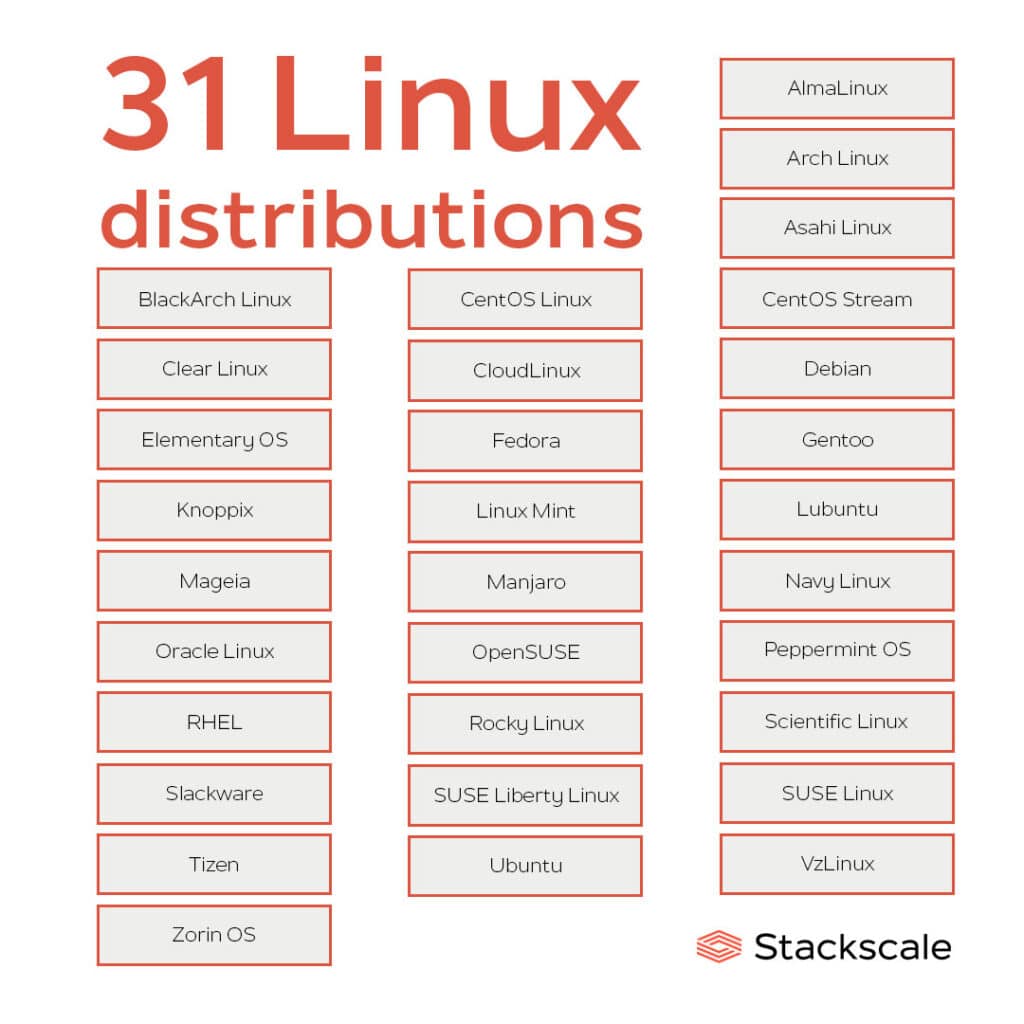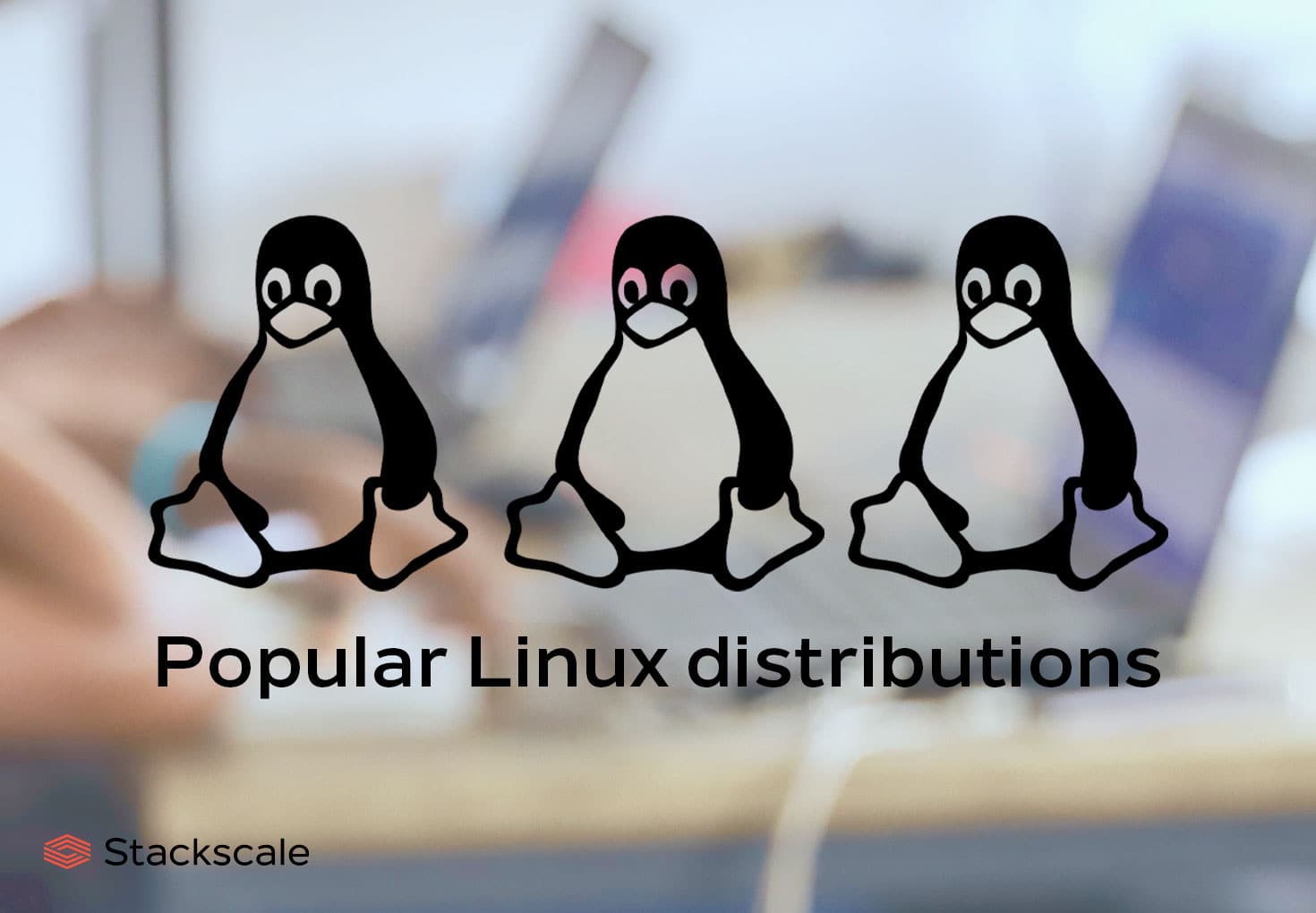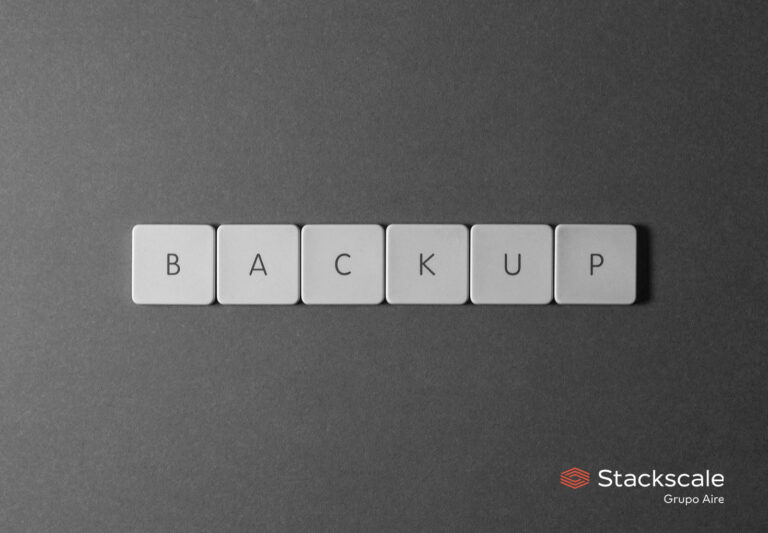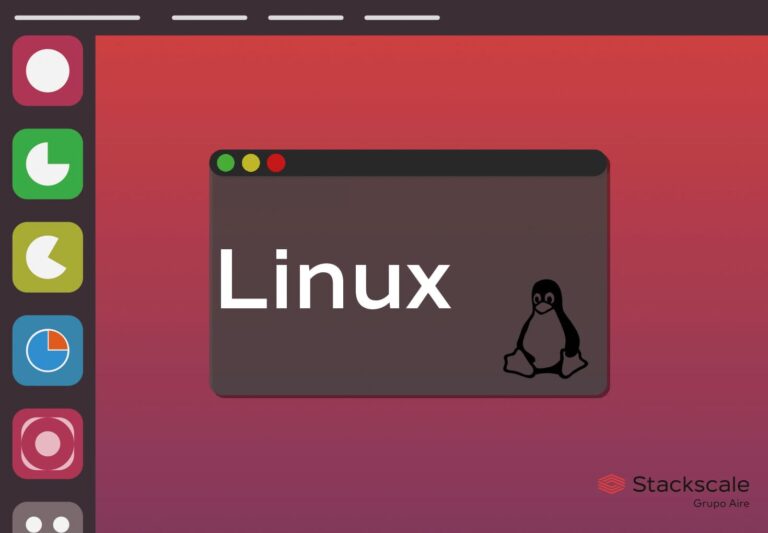In the following list, we have gathered some of the most popular Linux distributions and some growing distros too. GNU/Linux operating systems are Unix-like and open source, and based on the Linux kernel. Among the long list of Linux distributions, there are a number of distros that clearly stand out among the others — in terms of number of users, community, features, etc. Discover some details about some of the top Linux distributions.
Ubuntu
Ubuntu is a Linux distribution based on Debian. It is developed by Canonical and a community of developers. It has 3 official editions: Desktop, Server and Core, which can either run on a computer or on a VM. More than 34% of the websites using Linux use Ubuntu, according to W3Techs data. Its growth since 2010 has been amazing. It is also a popular distribution among cloud computing projects.
Ubuntu License: GPL and other licenses.
Ubuntu Latest major release with long-term support (LTS): Ubuntu 24.04 LTS (Noble Numbat).
Debian
Debian is an open source operating system. This distribution was first announced by Ian Murdock in 1993 as the “Debian Linux Release”. The Debian Project is a community of developers and users that maintain the GNU OS based on open source software. Currently, Debian systems use the Linux kernel or the FreeBSD kernel. However, they are also working on providing Debian for other kernels. Primarily, GNU Hurd.
Debian License: BSD, GPL and other open licenses.
Debian Latest major release: Debian 12.7 (Bookworm).
CentOS Linux
CentOS Linux is a distribution based on the source code of the commercial distribution Red Hat Enterprise Linux (RHEL). It was launched in 2004 and is backed up by a growing community. It is a safe bet for those looking for high-quality code. But CentOS 8 will be its last version. In 2019, Red Hat announced that CentOS Linux would be replaced by CentOS Stream — an upstream development platform for RHEL. New open source alternatives have appeared due to this change of strategy. For instance, Rocky Linux, founded by Gregory Kurtzer, founder of the CentOS project.
CentOS Linux License: GNU GPL.
CentOS Linux Latest major release: CentOS Linux 8.
CentOS Stream
CentOS Stream is an upstream development platform for Red Hat Enterprise Linux (RHEL). It is a midstream between Fedora Linux and RHEL. This platform aims to take advantage of open-source innovation for shaping upcoming stable RHEL releases.
CentOS Stream License: GNU GPL.
CentOS Stream Latest release: CentOS Stream 9.
Red Hat Enterprise Linux (RHEL)
Red Hat Enterprise Linux (RHEL) is a commercial Linux distribution developed by Red Hat. It has a server version and a desktop version. As it uses open source software, published under a General Public License, they make their code available to the public via CentOS. Red Hat has sponsored the CentOS project since 2014.
RHEL License: GPL.
RHEL Latest major release: RHEL 9.
Gentoo
Gentoo is a Linux distribution that features a rolling release model. Gentoo Linux was originally created by Daniel Robbins. It was named after the fast-swimming “gentoo penguin”, to reflect its potential. It is an attractive choice for Linux users looking for full control of the software. Gentoo users have great control over the services installed and running on their computer. They can immensely customize and optimize their system.
Gentoo License: Free software.
Gentoo Releases: rolling release.
Fedora
Fedora is a Linux distribution developed by the Fedora Project — sponsored mainly by Red Hat, with support from other companies. It is developed and maintained by the community and it is an upstream source of the commercial RHEL distribution. Fedora usually has more modern software versions, considered as “non stable”, that are later included in RHEL. There are different Fedora editions available: Workstation, Server, CoreOS, Silverblue and IoT. Fedora Linux was launched in 2003.
Fedora License: GPL and other licenses.
Fedora Latest major release: Fedora 40.
OpenSUSE
OpenSUSE is a Linux distribution sponsored by SUSE Software Solutions Germany GmbH and other companies. It was formerly known as SUSE Linux. OpenSUSE has a rolling release version, Tumbleweed, and a regular release version, Leap.
OpenSUSE License: GNU GPL and other licenses.
OpenSUSE Latest release: OpenSUSE Leap 16.
Scientific Linux
Scientific Linux is another Linux distribution based on RHEL’s free and open source software. It is produced by Fermilab, CERN, DESY and ETH Zurich. In April 2019, they announced its discontinuation. Nevertheless, its last version, Scientific Linux 7, will have maintenance updates until June 2024.
Scientific Linux License: GNU GPL and other licenses.
Scientific Linux Latest release: Scientific Linux 7.
CloudLinux
CloudLinux is a Linux distribution developed by CloudLinux, Inc. It is based on CentOS and uses the OpenVZ kernel and the RPM Package Manager. It is targeted to shared hosting providers and data centers. It stands out for improving server stability, density and security. The first version of CloudLinux OS was released in 2010.
CloudLinux Latest release: CloudLinux 9.4.
Elementary OS
Elementary OS is a Linux distribution based on Ubuntu. The OS is developed and maintained by Elementary, Inc. It aims to be a fast, open and privacy-respecting alternative to Windows and MacOS. It features a pay-what-you-want (PWYW) model.
Elementary OS License: GNU GPL and other licenses.
Elementary OS Latest release: Elementary OS 7.1 (Horus).
Linux Mint
Linux Mint is a community-driven Linux distribution based on Ubuntu. This distribution started in 2006. The Linux Mint project was initially created by Clément Lefèbvre. Linux Mint OS’ source code is available on GitHub. Most of the OS development is done in Python.
Linux Mint License: GPL.
Linux Mint Latest release: Linux Mint 22.
Arch Linux
Arch Linux is a Linux distribution based on 5 principles: simplicity, modernity, pragmatism, user centrality and versatility. It features a rolling release model.
Arch Linux License: GNU GPL and other licenses.
Arch Linux Release: rolling release.
Manjaro
Manjaro is a free Linux distribution based on Arch Linux. It is specially focused on accessibility and user-friendliness. It features a rolling release model. Its simplicity, stability and performance makes it a suitable alternative OS to MacOS and Windows. It offers multiple desktop environments.
Manjaro License: GPL and other open licenses.
Manjaro Latest release: Manjaro 24.1.1.
Oracle Linux
Oracle Linux (OL) is a Linux distribution packaged and distributed by Oracle; under GNU GPL since late 2006. It was formerly known as Oracle Enterprise Linux (OEL). It is based on RHEL’s source code. Oracle Linux is available with two Linux kernels: the Red Hat Compatible Kernel (RHCK) and the Unbreakable Enterprise Kernel (UEK).
Oracle Linux License: GNU GPL and other licenses.
Oracle Linux Latest major release: Oracle Linux 9.
Slackware
Slackware is one of the oldest Linux distributions, created by Patrick Volkerding in 1993. Many Linux distributions have been based on Slackware; for instance, the first versions of the SUSE Linux distribution. It was originally based on the Softlanding Linux System (SLS), one of the most popular original Linux distributions.
Slackware License: GNU GPL.
Slackware Latest major release: Slackware 15.0.
Mageia
Mageia is an open source, Unix-like operating system that started as a fork of Mandriva Linux back in 2010. It was created by former employees of Mandriva S.A. and some members of the Mandriva community. It stands out for being a secure, stable and sustainable OS. Besides, it provides a really large software repository. Its first version, Mageia 1, was released in June 2011.
Mageia License: GPL and other licenses.
Mageia Latest major release: Mageia 9.
Clear Linux
Clear Linux is an open source Linux distribution created by Intel. It is updated following a rolling release model. The OS is optimized for performance and security from the cloud to the Edge; as well as for Intel products. Clear Linux’s main targets are IT, DevOps, Cloud and AI professionals; it is not designed as a general-purpose distribution. Its source code is available on GitHub.
Clear Linux License: GPL and other licenses.
Clear Linux Releases: rolling release.
Rocky Linux
Rocky Linux is an open source Linux distribution, based on the source code of the commercial distribution RHEL. This Linux distribution is led by Gregory Kurtzer — founder of CentOS, together with Rocky McGaugh. Rocky Linux aims to fill the gap CentOS will leave as a community-supported, downstream of RHEL, after CentOS 8’s discontinuation by December 2021. As explained on Rocky Linux’s Wiki, this distribution aims to be “a solid, stable and transparent alternative for production environments, developed by the community for the community”. Stackscale provides two of its public mirrors in Madrid and Amsterdam.
Rocky Linux License: BSD and other licenses.
Rocky Linux Latest release: Rocky Linux 9.4.
AlmaLinux
AlmaLinux is a free, open source Linux distribution; compatible with RHEL. It is focused on long-term stability and governed by the community; with regular releases. AlmaLinux OS is sponsored by CloudLinux Inc. and supported by other sponsors. It is also a good alternative for those who are currently using CentOS, after its discontinuation by the end of 2021.
AlmaLinux License: GPLv2 and other licenses.
AlmaLinux Latest release: AlmaLinux 9.4.
Asahi Linux
Asahi Linux is a Linux distribution that intends to port Linux to Apple Silicon Mac computers. The goal is to make Linux run on Apple Silicon Mac computers so as to be used as a daily OS. This distro is developed by a community of free and open source software developers. Asahi Linux’s first Alpha version was released in March, 2022.
Asahi Linux License: General Public License v2 or MIT.
Asahi Linux Latest release: Asahi Linux Alpha Release.
Lubuntu
Lubuntu is a Linux distribution based on Ubuntu and developed by the Lubuntu community. It stands out for being lightweight, fast and offering great compatibility with many formats and applications. Besides, it offers a Software Center with a large number of free apps that can be safely downloaded.
Lubuntu License: GNU GPL and other licenses.
Lubuntu Latest release: Lubuntu 24.04.
SUSE Linux
SUSE Linux, also known as SUSE Linux Enterprise Server, is a Linux distribution, adaptable to any environment and optimized for security, reliability and performance. Originally based on Slackware, its first version was released in 1994. As Slackware, SUSE Linux is one of the oldest Linux distributions.
SUSE Linux Latest release: SUSE Linux Enterprise Server 15 SP6.
Knoppix
Knoppix is a free, open source Linux distribution based on Debian, developed by Klaus Knopper. It was mainly designed to be used as a Live CD, but it can also be installed on a hard disk like any other OS.
Knoppix License: free software licenses.
Knoppix Latest release: Knoppix 9.2.
VzLinux
VzLinux is a free and open source Linux distribution. It is a 1:1 clone of Red Hat Enterprise Linux and offers an easy conversion from CentOS. It can also be used as a guest OS in different hypervisors.
VzLinux Latest release: VzLinux 9.
Peppermint OS
Peppermint OS is a lightweight Linux distribution based on Debian Stable. It changed from Ubuntu to Debian in 2022. This OS is a beginner-friendly distribution, intuitive and easy to use.
Peppermint License: free software licenses.
Peppermint Latest release: Peppermint OS 11.
Zorin OS
Zorin OS is a Linux distribution based on Ubuntu, designed as a powerful and secure alternative to Windows and MacOS. Zorin OS is easy to use and its Appearance app allows users to change the desktop layout to the OS environment appearance they are familiar with — Windows, MacOS or Linux.
Zorin OS License: free software.
Zorin OS Latest release: Zorin OS 17.2.
BlackArch Linux
BlackArch Linux is an open source Linux distribution based on Arch Linux. It is especially designed for penetration testers and security researchers and it provides a lot of cybersecurity tools. The last version was released in September, 2021.
BlackArch Linux License: several licenses.
SUSE Liberty Linux
SUSE Liberty Linux is an enterprise-grade Linux distribution born to be an alternative to CentOS Linux, which has been replaced by a rolling release. It is focused on providing a secure distribution for mixed Linux environments. This new distro is developed by SUSE, using its Open Build Service tool. Besides, it is based on the SUSE Linux Enterprise Server kernel (SLES kernel).
SUSE Liberty Linux Latest release: SUSE Liberty Linux 9.
Navy Linux
Navy Linux is a minimalistic installation of the Linux OS, based on Red Hat Enterprise Linux. This open source distribution was founded in January 2021 by UnixLab, as a replacement for CentOS Linux. It is focused on minimizing hardware resources requirements to build a stable and secure Linux distro.
Navy Linux License: GNU GPL.
Navy Linux Latest release: Navy Linux 8.6.
Tizen
Tizen is an open-source, mobile operating system based on Linux. It was released in 2012 and it is developed by Samsung and backed by the Linux Foundation. The Tizen OS is primarily used in Samsung’s smart devices — TVs, smartwatches, etc. It is intended to provide seamless connectivity and user experience between connected devices.
Tizen License: GPLv2, LGPL, Apache License 2.0, BSD, Flora License and Freeware.
Tizen Latest release: Tizen 7.0.
List of popular Linux distributions
Here is the list of popular Linux distributions organized alphabetically:
| Linux distribution | License | Last release (As of june 2023) |
| AlmaLinux | GPLv2 and other licenses | AlmaLinux 9.4 |
| Arch Linux | GNU GPL and other licenses | Rolling release |
| Asahi Linux | General Public License v2 or MIT | Asahi Linux Alpha Release |
| BlackArch Linux | Several licenses | – |
| CentOS Linux | GNU GPL | CentOS Linux 8 |
| CentOS Stream | GNU GPL | CentOS Stream 9 |
| Clear Linux | GPL and other licenses | Rolling release |
| CloudLinux | – | CloudLinux 9.4 |
| Debian | BSD, GPL and other open licenses | Debian 12 (Bookworm) |
| Elementary OS | GNU GPL and other licenses | Elementary OS 7 (Horus) |
| Fedora | GPL and other licenses | Fedora 40 |
| Gentoo | Free software | Rolling release |
| Knoppix | Free software licenses | Knoppix 9.2 |
| Linux Mint | GPL | Linux Mint 22.1 |
| Lubuntu | GNU GPL and other licenses | Lubuntu 24.04 |
| Mageia | GPL and other licenses | Mageia 8 |
| Manjaro | GPL and other open licenses | Manjaro 22.1 (Talos) |
| Navy Linux | GNU GPL | Navy Linux 8.6 |
| Oracle Linux | GNU GPL and other licenses | Oracle Linux 9 |
| OpenSUSE | GNU GPL and other licenses | OpenSUSE Leap 15.5 |
| Peppermint OS | Free software licenses | – |
| Red Hat Enterprise Linux | GPL | RHEL 9 |
| Rocky Linux | BSD and other licenses | Rocky Linux 9.4 |
| Scientific Linux | GNU GPL and other licenses | Scientific Linux 7 |
| Slackware | GNU GPL | Slackware 15.0 |
| SUSE Liberty Linux | – | SUSE Liberty Linux 9 |
| SUSE Linux | – | SUSE Linux Enterprise Server 15 SP6 |
| Tizen | GPLv2, LGPL, Apache License 2.0, BSD, Flora License and Freeware | Tizen 7.0 |
| Ubuntu | GPL and other licenses | Ubuntu 24.04 LTS |
| VzLinux | – | VzLinux 9 |
| Zorin OS | Free software | Zorin OS 17.2 |

On the following webpage, you can find the statistics of the most used Linux distributions over the last decade.
Dutch version: 19 populaire Linux-distributies.





